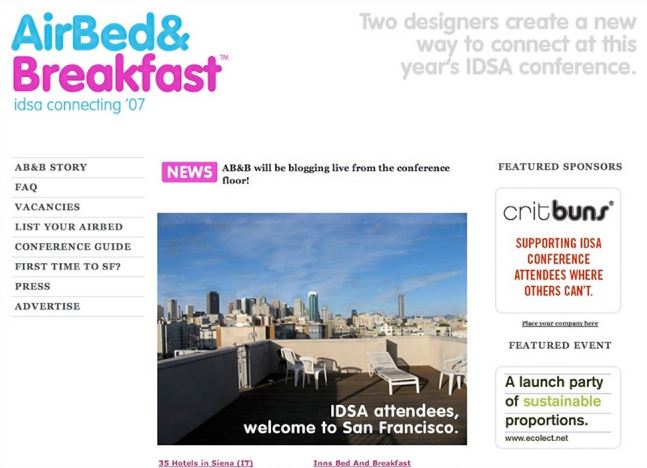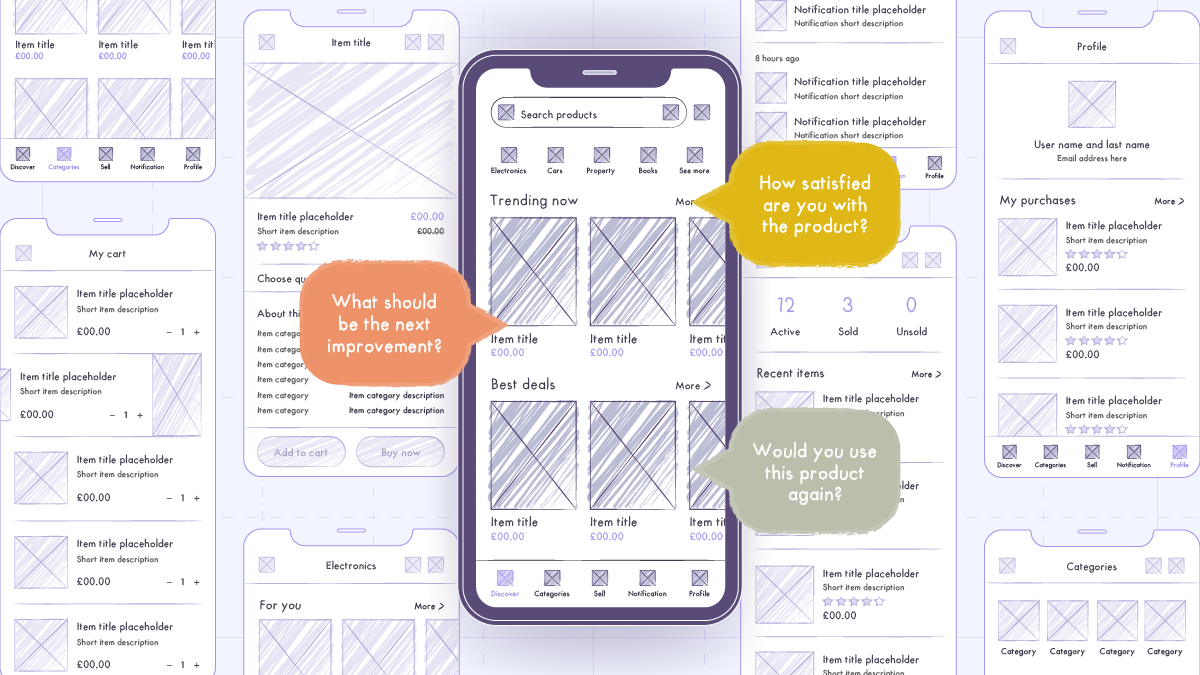If you are building an online marketplace, you might have heard of the term MVP, or minimum viable product. An MVP is a version of your product that has the minimum features needed to test your core value proposition with real customers.
But before you rush off to build a fully-functional high-fidelity MVP, it’s important to first find out if there’s a real problem in your chosen market and whether customers are willing to use and pay for your solution. The best way to validate this problem-solution fit is with a low-fidelity MVP as part of the discovery phase.
In this blog post, we will explain what a low-fidelity MVP is, why it is useful in the discovery phase of marketplace development, and how to create one.
Definition of a low-fidelity MVP
A low-fidelity MVP is a simple and cheap way to test your assumptions about your product and market. It does not have to be a fully functional product, but rather a prototype, a mockup, or even a landing page that shows the main value proposition of your product. The goal of a low-fidelity MVP is to get feedback from potential customers as quickly and cheaply as possible, without spending too much time and money on development.
The discovery phase in marketplace development
The first stage of building an online marketplace is known as the discovery phase, where you identify and validate the problem you are solving, the market you are targeting, and the solution you are offering. On a practical level, it means gaining an in-depth understanding of user personas, user flows, and business parameters.
The discovery phase helps you avoid building something that nobody wants or needs, and instead focuses on finding the problem-solution fit. Problem-solution fit means that you have a solution that solves a real problem for a specific segment of customers who are willing to pay for it.
Advantages of a low-fidelity MVP
A low-fidelity MVP can help you evaluate the various components (features) of your solution in terms of friction and impact. There’s no sense in wasting resources on features that irritate or confuse initial users. Using a low-fidelity MVP in the discovery phase has many advantages:
- It helps you test your assumptions and hypotheses before investing too much time and money into development.
- It helps you get feedback from real customers and learn about their needs, preferences, and behaviour.
- It helps you iterate and improve your product based on customer feedback and data.
- It helps you reduce the risk of failure and increase the chances of success.
Types of low-fidelity MVPs
There are many types of low-fidelity MVPs that you can use in the discovery phase of marketplace development, depending on your goals and resources. Some general examples include:
Landing page:
A landing page is a single web page that showcases the basic premise of your online marketplace (target audience, problem and solution) with a clear call to action. You can use a landing page to test your value proposition, generate interest, and collect email addresses or sign-ups from potential buyers and sellers.
Explainer video:
An explainer video is a short video that explains what your product does, how it works, and why it is valuable. You can use an explainer video to demonstrate your product concept, show its benefits, and attract attention.
Mockup or wireframe:
A mockup or wireframe is a visual representation of how your product will look like, without any functionality or interactivity. You can use a mockup or wireframe to show your product design, layout, and features, and get feedback on usability and aesthetics.
Prototype:
A prototype is a simplified version of your product that has some functionality and interactivity, but not all the features or polish. You can use a prototype to test your product functionality, user experience, and value proposition with real users.
You can discover more specialised low-fidelity MVP types in our blog post: 6 Minimum Viable Product types You need to Look at Before Building your Product
The difference between problem-solution fit and product-market fit
As we mentioned earlier, problem-solution fit and product-market fit are two important concepts in the discovery phase of marketplace development. But what is the difference between them?
Problem-solution fit means that you have validated that your solution solves a real problem for a specific segment of customers. To achieve problem-solution fit, you need to answer questions like:
- What problem are you solving?
- Who are you solving it for?
- How are they solving it now?
- How does your solution solve it better?
Product-market fit means that you have validated that there is a large enough market that is willing to pay for your solution. To achieve product-market fit, you need to answer questions like:
- How big is your market?
- How much are they willing to pay?
- How do they find and buy your solution?
- How do you acquire and retain them?
Problem-solution fit thus comes before product-market fit. You need to first find a solution that works for a specific customer segment before scaling it to a larger market. However, both are iterative processes that require constant testing and learning.
Well-known online marketplaces that used a low-fidelity MVP to establish problem-solution fit
Etsy
Etsy is a global marketplace for handmade and vintage goods. The founders of Etsy started with a paper prototype, which is a simple sketch of the main features and user interface of the website. They used this prototype to test their assumptions about the customer problem, value proposition, and market size. They also interviewed potential sellers and buyers to get feedback on their idea. The paper prototype helped them validate that there was a demand for a niche marketplace that connects crafters and customers.
Airbnb
Airbnb is a platform that allows people to rent out their spare rooms or properties to travellers. The founders of Airbnb used a landing page as their low-fidelity MVP. They created a simple website with photos of their own apartment, which they offered to rent out during a conference in San Francisco. They posted the link on various forums and blogs, and managed to get three bookings. The landing page helped them validate that there was a market for peer-to-peer accommodation rentals, and that people were willing to pay for it.

Zappos
Zappos is an online retailer that sells shoes and clothing. The founder of Zappos used a functional prototype as his low-fidelity MVP. He went to a local shoe store and took photos of the shoes he wanted to sell online. He then uploaded the photos to a simple website, and waited for orders. When someone ordered a pair of shoes, he went back to the store, bought the shoes, and shipped them to the customer. The functional prototype helped him validate that people were comfortable buying shoes online, and that he could make a profit from it.
Conclusion
A low-fidelity MVP in the discovery phase of online marketplace development can help you validate your problem, market, and solution quickly and cheaply. By using different types of low-fidelity MVPs, such as landing pages, explainer videos, mockups, wireframes, or prototypes, you can test your assumptions on real customers. Their feedback will allow you to iterate and improve your product until it solves their problems in a satisfactory manner. This will set your marketplace idea up for the next phase: How to establish product-market fit for your online marketplace with a high-fidelity MVP

